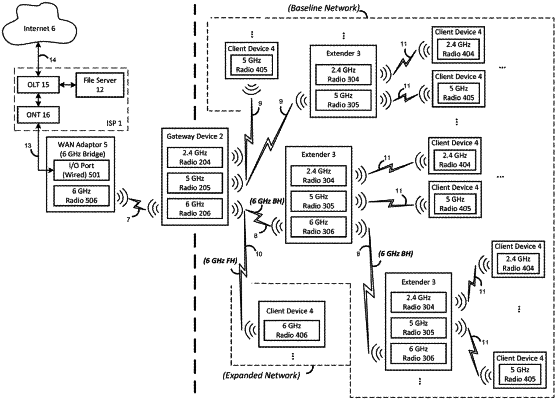| CPC H04W 28/0862 (2023.05) [H04L 1/0003 (2013.01); H04L 5/0007 (2013.01); H04W 28/0278 (2013.01); H04W 88/14 (2013.01); H04W 88/16 (2013.01); H04W 84/12 (2013.01)] | 20 Claims |

|
1. An access point (AP) capable of orthogonal frequency division multiple access (OFDMA) subcarrier allocation for stations in a wireless network, the AP comprising:
a memory storing instructions; and
a processor configured to execute the instructions to cause the AP to:
determine a first ratio of a total downlink buffered traffic load for each of a wide area network backhaul station (WAN BSTA) and one or more local area network (LAN) BSTAs, respectively, in relation to a total downlink buffered traffic load for all of the stations in the wireless network;
determine a second ratio of the total uplink buffered traffic load for each of the WAN BSTA and the one or more LAN BSTAs, respectively, in relation to a total uplink buffered traffic load for all of the stations in the wireless network;
perform OFDMA subcarrier allocation for the downlink traffic by assigning available channel bandwidth proportional to the first ratio for each of the WAN BSTA and the one or more LAN BSTAs, respectively; and
perform OFDMA subcarrier allocation for the uplink traffic by assigning available channel bandwidth proportional to the second ratio for each of the WAN BSTA and the one or more LAN BSTAs, respectively.
|